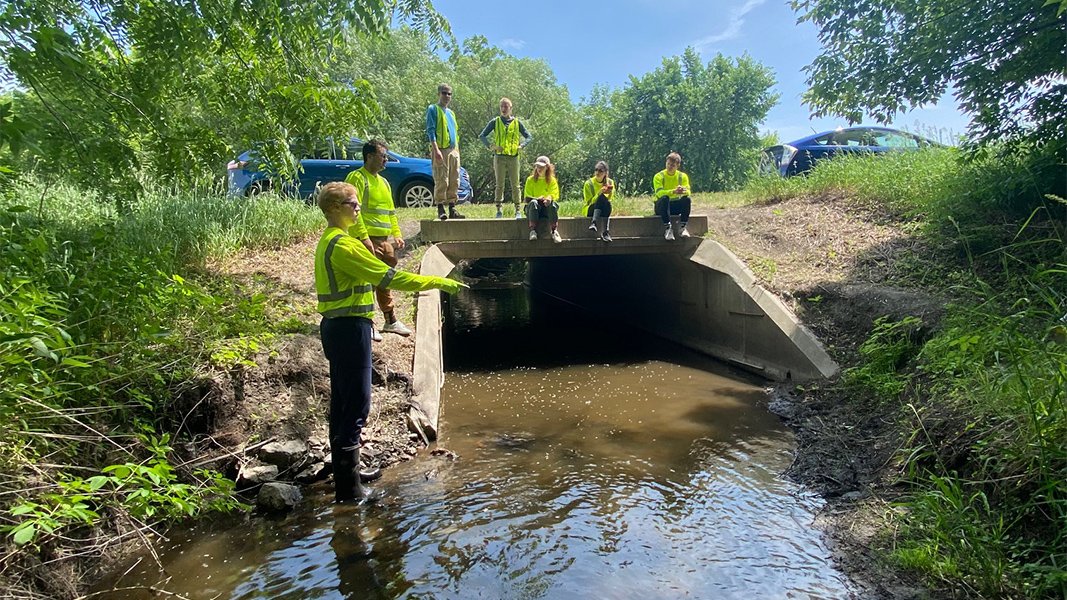Summertime Fieldwork: Gathering stream samples




Summertime is fieldwork time! Here researchers and students step into a stream for a lesson on the United States Geological Survey protocols for stream sampling. Students learned how to collect samples from the thalwag, the line that connects the deepest points of the stream. They also learned how to measure a stream's velocity, depth, cross-section, and how to log that information into a mobile GIS data collection program.
The students' work is part of a project evaluating the influence exerted on the stream by effluent from a wastewater treatment plant, particularly focused on concentrations of pharmaceuticals and antibiotics. It is a multidisciplinary project including graduate students and post-doctoral scholars from Bill Arnold’s research group at the University of Minnesota, a team of undergraduate researchers from Kristine Wammer’s lab at the University of St. Thomas, and several regional wastewater treatment facilities. Stream samples are being collected upstream of the wastewater treatment plant, at the wastewater discharge point, and at various points downstream. The effluent from the wastewater treatment plant is also sampled. The goal is to determine if wastewater effluent flowing into the stream could be polluting the stream and, potentially, inducing antibacterial resistance in the stream.
Researchers extract, isolate, and measure concentrations of pharmaceuticals in the water samples to compare against flow data and antibiotic resistance. Researchers then pair the concentration data with wastewater discharge data and with the cross-section, velocity, and depth measurements that the students pictured are learning to collect. They construct a mass balance of the stream (a mass balance is an application of conservation of mass and accounts for material entering and leaving a system). This method helps researchers determine the influence of the wastewater on the stream.